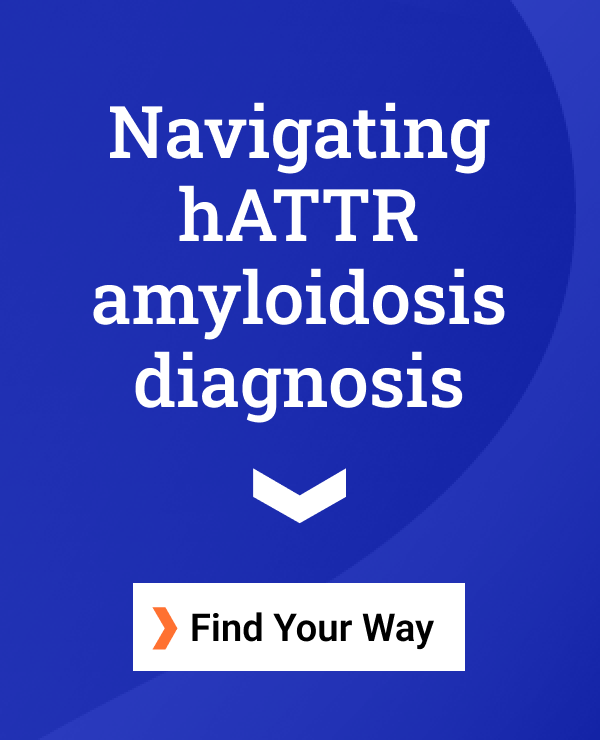Familial amyloid polyneuropathy (FAP) is a rare genetic condition in which abnormal deposits of protein, called amyloids, build up on the peripheral nervous system and various organs, affecting their function.
Cardiac involvement is usually diagnosed in the later stages of this progressive condition. The accumulation of amyloid deposits in the heart can cause thickening of heart walls, resulting in enlarged heart muscles. Symptoms include shortness of breath, frequent fatigue, reduced exercise capacity, and chest pain. The amyloid deposits can also interfere with the electrical impulses of the heart, causing irregular heartbeat (arrhythmia) and heart block.
When a doctor suspects cardiac involvement, he or she may order heart imaging to confirm the diagnosis, visualize the extent of damage, and plan further treatment. Non-invasive imaging techniques such as echocardiography, electrocardiogram (ECG or EKG), and magnetic resonance imaging (MRI) are used to determine heart involvement in FAP.
Echocardiography for FAP
Echocardiography is an imaging technique that uses ultrasound, or high-intensity sound waves, to image the heart. A probe placed on the chest sends sound waves to the heart, which bounce back as an echo and are recorded and converted into images.
Cardiac involvement in FAP detected by echocardiography has particular characteristics. The amyloid deposits can increase the thickness of heart valves and the image generated off an amyloid deposit has a speckled pattern that can be distinctly differentiated from the surrounding heart tissue. An increased thickness of the left ventricle wall of more than 12mm and characteristic speckled pattern are strong indicators of FAP.
No preparation is required for the test. The technician uses a gel to improve skin contact of the probe. The gel is easily wiped off after testing. The procedure takes about 20-30 minutes.
ECG for FAP
ECG is a rapid, non-invasive method that records the electric signals of the heartbeat, interprets the voltage information, and traces it on graph paper. Any structural abnormality due to amyloid deposits will affect this electrical impulse and can be detected in the graph.
With every heartbeat, an electrical wave passes through the heart starting from the top, where the right and the left chambers generate the first wave called the “P” wave. Following this, the lower right and left ventricle chambers of the heart respond with the “QRS wave.” The final wave is called the “T” wave and indicates that the heart is back to its resting phase.
A low QRS voltage is a defining characteristic of cardiac amyloidosis. An ECG can also help distinguish cardiac amyloidosis due to FAP from other conditions that cause cardiac amyloidosis.
As in the case of echocardiography, no preparation is required for an ECG. Electrodes (sticky patches) are placed at various locations on the chest and sometimes on the upper arm. Each electrode is connected to a computer screen and relays the electrical impulse from the heart to record activity. Some discomfort is normal when the electrodes are removed. An ECG takes about 30 minutes.
Heart MRI for FAP
A heart MRI is a non-invasive imaging technique that uses a magnetic field and radio waves to take detailed images of the heart. Contrast material may be injected into the veins before scanning. The material travels to the heart, and during imaging, the amyloid deposits in the heart walls and between cells can be visualized.
A heart MRI is usually ordered when the heart thickening observed in echocardiography cannot be definitively tied to FAP.
MRI does not use radiation. The MRI scanner is a large tube with magnets built into it. Therefore, MRI is not recommended for patients with metal implants, shrapnel, certain tattoos, etc. The scanner tube is narrow, and patients with claustrophobia might find it uncomfortable. Virtual reality aids can provide distraction and ease discomfort. Earplugs may also be made available to tune out the noise from the scanner.
***
FAP News Today is strictly a news and information website about the disease. It does not provide medical advice, diagnosis, or treatment. This content is not intended to be a substitute for professional medical advice, diagnosis, or treatment. Always seek the advice of your physician or other qualified health care providers with any questions you may have regarding a medical condition. Never disregard professional medical advice or delay in seeking it because of something you have read on this website.




